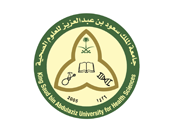Abstract
Background. Accreditation standards for graduate health professional programs require the inclusion of interprofessional learning and collaboration (IPL/C) activities in entry-level curricula. This implementation necessitates collaboration among educators from multiple disciplines and openness to innovation and to educate students in a manner that breaks down uni-professional curriculum silos that are known barriers to the creation of meaningful IPL experiences.
Objective. The purpose of this paper is to describe one institution’s process for creating a longitudinal interprofessional education (IPE) curriculum that aligns with accreditation mandates and meets the call to foster IPC competency skills.
Methods. Widener University established an interprofessional thread of courses relevant to both occupational therapy and physical therapy doctoral students as well as integrated experiential learning within a student-run pro bono clinic. Students were assessed at multiple timepoints throughout the curriculum using the Readiness for Interprofessional Learning Scale (RIPLS) and the Interprofessional Collaborative Competencies Attainment Scale (ICCAS). One-way repeated measures ANOVA and post hoc testing for any significant differences using the Tukey’s HDS test were used to explore results of the RIPLS. Retrospective pre-and post-test differences for the ICCAS subscale scores were examined using paired sample t-tests at two timepoints
Results.
All ICCAS subscales changed significantly at year one and by graduation. ICCAS findings support self-reported perceptions of acquiring skills necessary for interprofessional collaboration in clinical practice. Statistically significant differences for total score, teamwork and collaboration, and professional identity indicate students were less optimistic about learning from peers over time. Total and Teamwork and collaboration subscale scores decreased significantly when comparing initial perceptions to year one and to graduation. Initial professional identity scores decreased significantly when compared to graduation.
Conclusions. This paper reports on a 5-year journey in curriculum development and implementation and shares preliminary outcomes for the first cohort of graduates. The insights presented can help health science faculty understand how to develop and engage with other professions to create an authentic, longitudinal interprofessional curriculum.
Recommended Citation
Wellmon, Robert; Black, Jill D.; Wachter-Schutz, Wendy; Youse, Kathleen M.; Pinckney, Adrienne N.; and Felker, Lori L.
(2025)
"Breaking Down Silos: Creating And Implementing A Longitudinal Interprofessional Education Curriculum For Graduate Health Science Professional Students,"
Health Professions Education: Vol. 11:
Iss.
2, Article 8.
DOI: 10.55890/2452-3011.1335
Available at:
https://hpe.researchcommons.org/journal/vol11/iss2/8
Included in
Interprofessional Education Commons, Occupational Therapy Commons, Physical Therapy Commons



